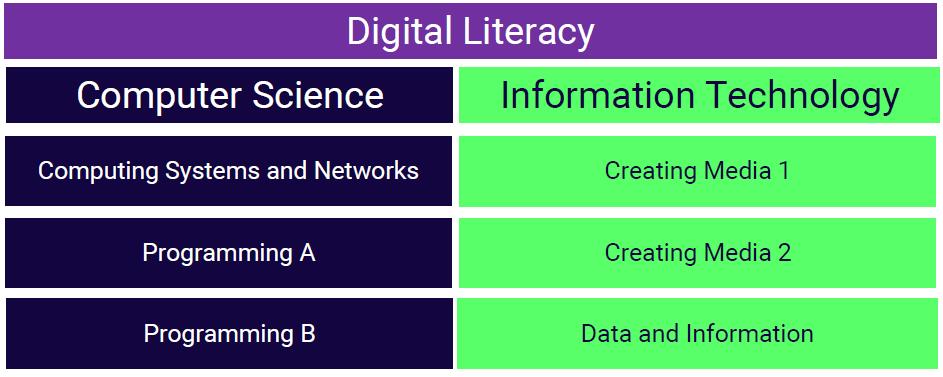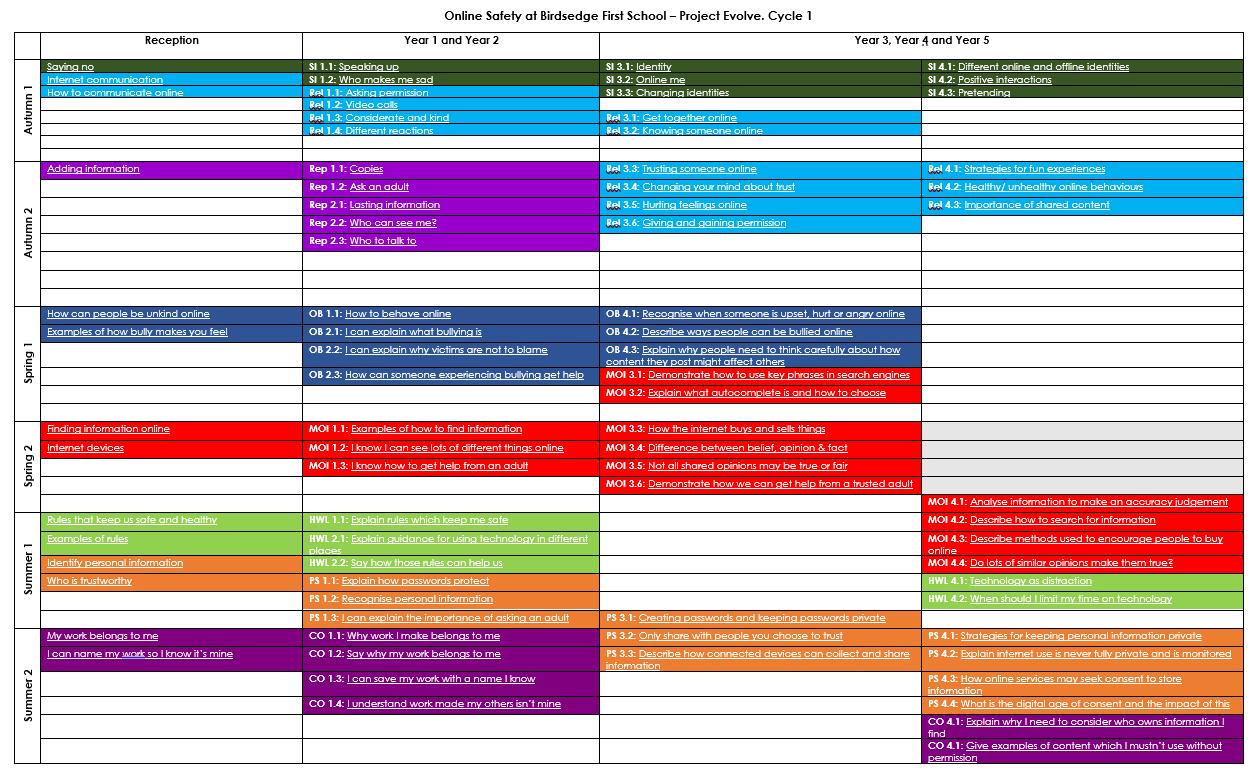ICT Curriculum
Long Term Plan and Guidance

We follow the Teach Computing Curriculum
The due to our Mixed Aged Classes.
We teach ICT throughout the school year, committing weekly lessons in whole class groups of Reception, Year 1 and 2 and Year 3,4 and 5.
Key stage 1
Pupils should be taught to:
▪ understand what algorithms are; how they are implemented as programs on digital devices; and that programs execute by following precise and unambiguous instructions
▪ create and debug simple programs
▪ use logical reasoning to predict the behaviour of simple programs
▪ use technology purposefully to create, organise, store, manipulate and retrieve digital content
▪ recognise common uses of information technology beyond school
▪ use technology safely and respectfully, keeping personal information private; identify where to go for help and support when they have concerns about content or contact on the internet or other online technologies.
Key stage 2
Pupils should be taught to:
▪ design, write and debug programs that accomplish specific goals, including controlling or simulating physical systems; solve problems by decomposing them into smaller parts
▪ use sequence, selection, and repetition in programs; work with variables and various forms of input and output
▪ use logical reasoning to explain how some simple algorithms work and to detect and correct errors in algorithms and programs
▪ understand computer networks including the internet; how they can provide multiple services, such as the world wide web; and the opportunities they offer for communication and collaboration
▪ use search technologies effectively, appreciate how results are selected and ranked, and be discerning in evaluating digital content
▪ select, use and combine a variety of software (including internet services) on a range of digital devices to design and create a range of programs, systems and content that accomplish given goals, including collecting, analysing, evaluating and presenting data and information
▪ use technology safely, respectfully and responsibly; recognise acceptable/unacceptable behaviour; identify a range of ways to report concerns about content and contact.
Computer Science
Information Technology
Digital Literacy
How computer and computer systems work and how they are designed and programmed
Looking at technology in our lives and the purposeful use of existing programmes to develop products and solutions
Foundations
The skills knowledge and understanding needed in order to participate fully and safely in an increasingly digital world
Applications
Implications
The core of computing is computer science in which pupils are taught the principles of information and computation, how digital systems work and how to put this knowledge to use through programming. Building on this knowledge and understanding pupils are equipped to use information technology to create programs, systems and a range of content.
Computing also ensure that pupils become digitally literate- able to use and express themselves and develop their ideas through information and communication at a level suitable for the future workplace and as active participants in a digital world.




